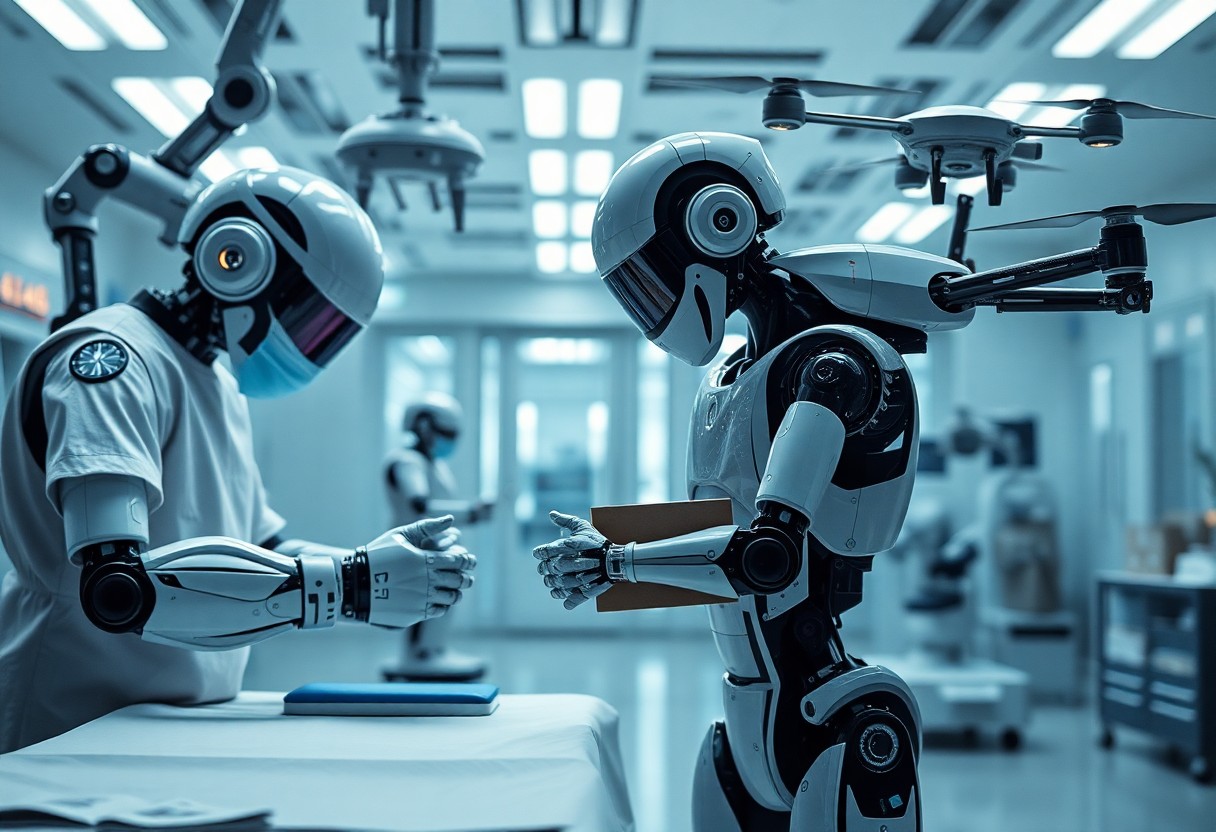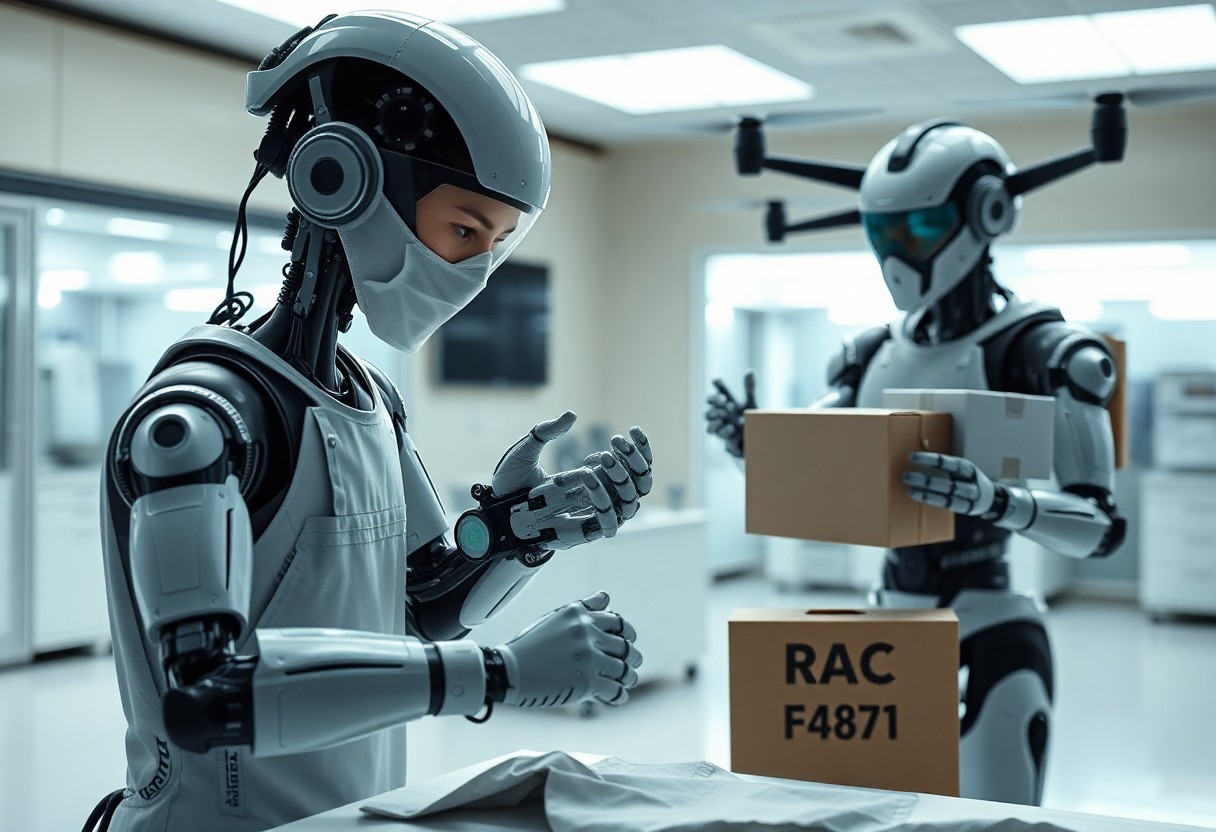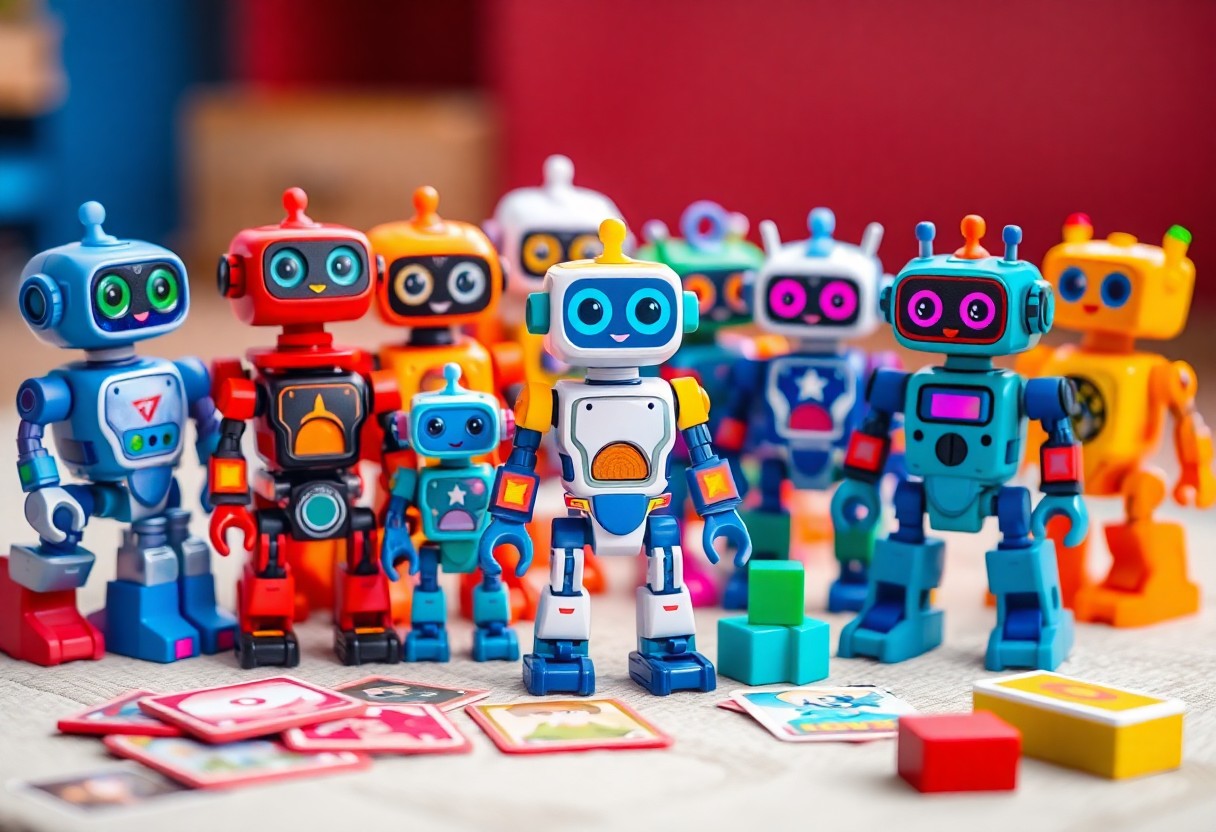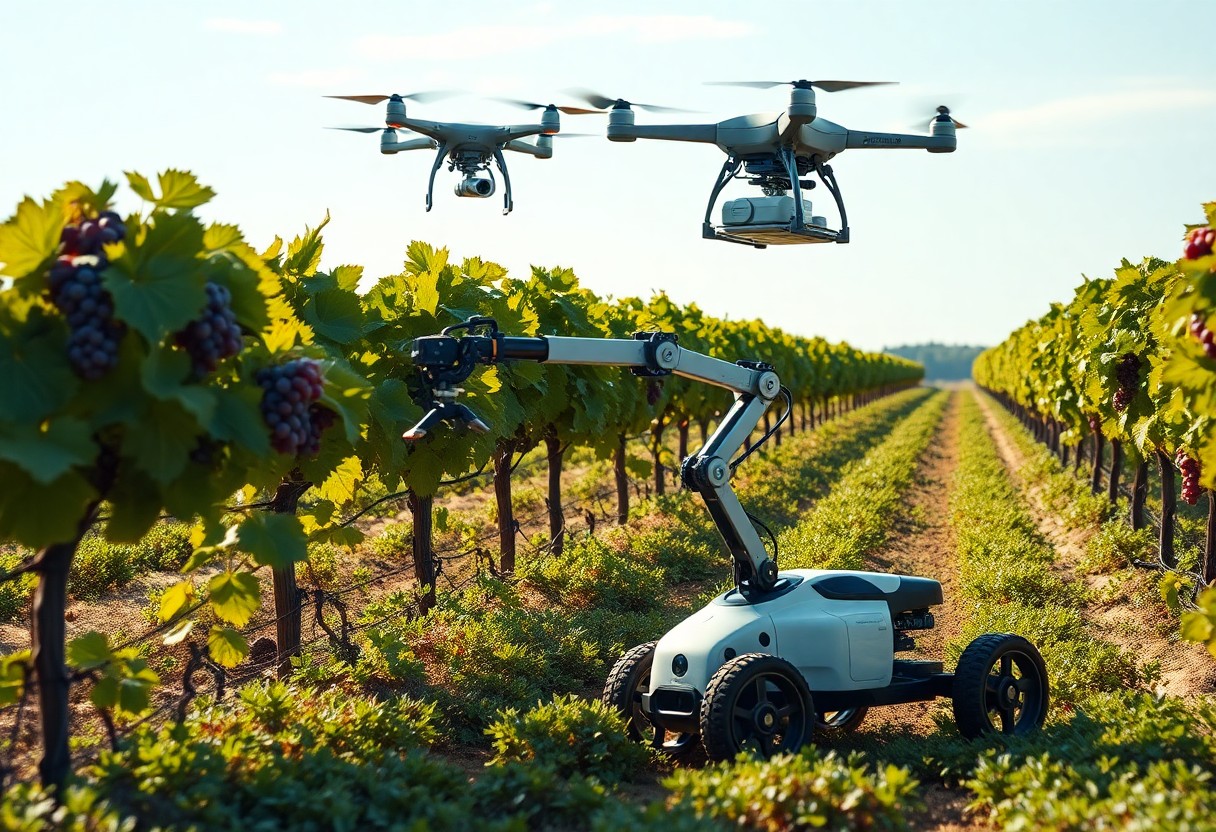You are on the brink of discovering the incredible advancements in robotics that are transforming industries and enhancing everyday life. In this list, you will explore ten groundbreaking innovations that are shaping the future of technology, from autonomous vehicles to advanced healthcare robots. These innovations not only revolutionize how we work and live but also push the boundaries of what robotics can achieve. Join us as we probe into these remarkable developments and see how they may impact your world today and in the years to come.
Robotic Revolution in Healthcare
The integration of robotics in healthcare is revolutionizing how you receive medical care. From improving surgical precision to facilitating remote patient monitoring, robotic technologies are enhancing both the efficiency and effectiveness of healthcare services. This transformation not only streamlines procedures but also enriches patient experiences, making your health management more accessible and personalized.
Innovations in Surgical Robots
Advancements in surgical robots enable you to undergo minimally invasive procedures with enhanced accuracy and reduced recovery times. These sophisticated systems provide surgeons with robotic assistance, allowing for greater precision and control during operations. Increased visualization and dexterity mean that many complex surgeries can be performed with less trauma to surrounding tissues, significantly improving your overall surgical outcomes.
The Rise of Telepresence Robots in Care
Telepresence robots are emerging as vital tools in delivering healthcare services, particularly in remote settings. You can interact with healthcare professionals in real-time, gaining access to expert consultations from the comfort of your home. These robots provide a bridge for communication and monitoring, enhancing accessibility for patients who may have mobility issues or live far from healthcare facilities.
The rise of telepresence robots in care is particularly significant in a world increasingly focused on remote service provision. These robots allow you to engage in consultations with healthcare providers through high-definition video and interactive interfaces, ensuring that you don’t miss out on necessary check-ups or follow-ups. Moreover, they help healthcare professionals monitor your condition effectively, offering timely interventions as needed. With their capacity to deliver healthcare directly to your location, telepresence robots are transforming how you access medical expertise, making healthcare more inclusive and responsive to your needs.

Transforming Industries: Manufacturing Robots
Manufacturing robots have revolutionized the way industries operate, streamlining processes and enhancing production capabilities. By integrating advanced technology, these robots are capable of handling repetitive tasks with precision, reducing human error and increasing output. As you explore the latest trends, check out the Top 10 robotics developments of October 2024 to stay updated on groundbreaking innovations in this field.
The Evolution of Collaborative Robots
Collaborative robots, or cobots, are designed to work alongside human operators, enhancing productivity and safety in the workplace. You can leverage their versatility to efficiently adapt to various tasks, thanks to their intuitive programming and user-friendly interfaces.
Automation and Efficiency Gains in Production Lines
The integration of robots in production lines has led to significant automation and efficiency gains, allowing you to achieve higher output with minimal downtime. These systems can operate continuously, swiftly adjusting to changing demands and optimizing workflows in real-time.
With automation embedded in your production lines, you can anticipate reductions in labor costs and increased consistency in product quality. Furthermore, advanced robotics systems can gather data and analyze performance metrics, enabling you to make informed decisions that enhance operational efficiency. By embracing these technologies, you position your business to respond quickly to market changes while ensuring a competitive edge in the industry.
Smart Robotics and AI: The Future of Autonomy
As we advance into the future, the integration of smart robotics and artificial intelligence (AI) promises to redefine autonomy. These technologies enable robots to perform tasks with minimal human intervention, making them more efficient and adaptable in various applications. You will find that incorporating AI enhances decision-making capabilities, allowing robots to learn from their environments and experiences, resulting in smarter and more responsive machines that can interact with the world around them seamlessly.
Integrating Machine Learning for Enhanced Intelligence
Machine learning is at the heart of many robotics innovations, empowering machines to analyze data and learn from it autonomously. By using algorithms and historical data, your robots can improve their performance over time, adapting to new challenges and tasks. This technology enables robots not only to follow pre-programmed instructions but also to develop their own strategies, enhancing overall efficiency and effectiveness in their operations.
Navigating Complex Environments with Advanced Sensors
Equipping robots with advanced sensors is necessary for navigating complex environments. These sensors enable your robots to perceive and interpret their surroundings accurately, facilitating safer and more efficient movement. With capabilities such as object recognition, distance measurement, and real-time mapping, your robots can adapt to dynamic environments and make informed decisions based on sensory input, enhancing their autonomy and functionality.
- Enhanced obstacle detection
- Improved robotic navigation
- Real-time environmental mapping
- Object classification
- Adaptive responses to varying terrains
| Benefit | Description |
|---|---|
| Enhanced Safety | Advanced sensors decrease the likelihood of accidents and collisions. |
| Increased Efficiency | Robots can navigate more quickly and accurately through complex spaces. |
| Adaptability | Robots can adjust their strategies based on sensor feedback in real-time. |
| Better Interaction | Robots can respond intelligently to unpredictable situations. |
Advanced sensors play a pivotal role in allowing robots to traverse intricate environments. These devices include LIDAR, ultrasonic, and cameras that grant your robots the ability to perceive their surroundings in detail. The integration of these advanced sensors means your robots can map their environment, recognize obstacles, and make split-second decisions on the best route or action to take. Such capabilities not only improve their operational efficiency but also ensure they can function in a wider variety of settings, from cluttered warehouses to outdoor terrains.
- Improved object detection accuracy
- Comprehensive environmental awareness
- Responsive navigation algorithms
- Dynamic path planning capabilities
- Integration with external data sources
| Sensor Type | Use Case |
|---|---|
| LIDAR | Used for creating high-resolution maps and avoiding obstacles. |
| Ultrasonic Sensors | Great for simple distance measurements and proximity detection. |
| Vision Cameras | Enables detailed environmental analysis and object recognition. |
| Infrared Sensors | Useful for detecting heat and movement in robotic applications. |
Robotics in Everyday Life: Enhancements and Assistance
Robotics is becoming increasingly integrated into your daily routine, enhancing convenience and offering assistance in various forms. From automated home systems to smart delivery services, these innovations simplify tasks, providing you more time to focus on what matters. As you explore robotic technologies, you’ll find that their efficiency improves your quality of life and reshapes how you interact with your environment.
Robotic Home Assistants: The New Family Helpers
Robotic home assistants are transforming the way you manage household chores. These intelligent gadgets, from vacuuming robots to smart kitchen devices, learn your preferences and routines, enabling them to perform tasks with minimal input. By taking over mundane chores, they free up your time, allowing you to enjoy a more relaxed and organized home environment.
Drones and Their Impact on Delivery Services
Drones are revolutionizing delivery services, offering faster and more efficient ways to receive packages right at your doorstep. With advancements in technology, you can expect quicker deliveries, fewer traffic-related delays, and reduced carbon footprints. As companies adopt drone delivery, your shopping experience becomes more convenient, driving a shift towards a more innovative future in logistics.
These aerial machines are equipped with high-resolution cameras and sophisticated navigation systems, ensuring they can deliver items precisely and safely. As a customer, you’ll likely appreciate real-time tracking updates, allowing you to monitor your package from the moment it leaves the warehouse to its arrival at your door. Furthermore, the use of drones minimizes the reliance on traditional delivery vehicles, which can alleviate traffic and reduce environmental impact. This emerging technology is not just a trend; it’s reshaping how you think about delivery and logistics as a whole.
Sustainable Robotics: The Eco-Friendly Frontier
As the world faces pressing environmental challenges, sustainable robotics emerges as a key player in fostering eco-friendly practices. You can explore how this innovative sector aims to minimize waste, enhance energy efficiency, and create a greener future. From drone technology to automation in manufacturing, these advancements highlight the potential of robotics to contribute positively to the environment, ensuring that new developments do not come at the cost of our planet’s health.
Technologies Promoting Energy Efficiency
Energy-efficient robotics harness advanced algorithms and smart materials to significantly reduce power consumption. You will find that innovations such as regenerative braking, energy-harvesting systems, and optimized motion control help robots operate with minimal energy waste. This not only lowers operational costs but also diminishes the carbon footprint associated with robotic processes, allowing you to embrace an eco-friendlier approach in your automation efforts.
Recycling Innovations in Robotics Production
Recycling in robotics production introduces sustainable practices that minimize environmental impact. You can benefit from initiatives that focus on using biodegradable materials and reprocess existing components, fostering a circular economy. These efforts ensure that your robotic systems can be manufactured and discarded responsibly, paving the way for a future where environmental considerations are at the forefront of technological advances.
Innovations in recycling for robotics production go beyond just reusing materials; they involve the development of advanced processes to reclaim components from old robots. For instance, companies are increasingly using techniques like additive manufacturing, where materials are extracted and repurposed for new builds. You may find that many manufacturers are now committed to sourcing recycled materials, not only reducing the demand for virgin resources but also minimizing waste. This trend is not just beneficial for the environment; it also enables you to align your robotics investment with sustainable practices that resonate with eco-conscious consumers.
To wrap up
Taking this into account, understanding the latest advancements in robotics can significantly enhance your appreciation for this rapidly evolving field. From autonomous vehicles to innovative surgical robots, these 10 groundbreaking innovations showcase the potential to transform industries and daily life. By staying informed about these developments, you can better grasp the implications for your work, your community, and even your personal interests. Embrace the future of robotics, as it offers you endless possibilities for growth and exploration.






